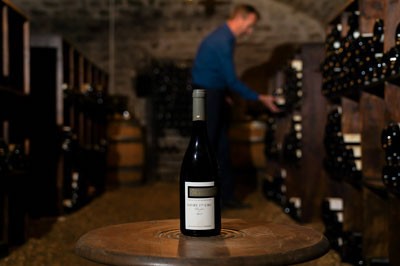Givry, (with its hamlets of Poncey, Cortiambles and Russilly), Dracy-le-Fort, and Jambles form a distinct wine production zone in the Cote Chalonnaise. Here, red wines represent 80% of the appellation, and there are 240 acres of Premier Cru red (and a mere 24 acres of Premier Cru white). Produced in the communes of Givry, Dracy-le-Fort and Jambles, the appellation Givry (not to be confused with Gevrey-Chambertin, one of the villages of the Côte d'Or) includes 26 Premiers Crus. Much of the area is planted on brown soils derived from the breakdown of Oxfordian Jurassic limestone and clay limestone. Most of the vines are planted facing east-south-east or due south at altitudes between 240 and 280 meters, with some slightly higher.
Givry
White Givry is Chardonnay, and should be a bright, limpid pale gold. Aromas of honey and lemon show good structure, while tight floral and dried fruit notes develop with age. A good Givry white is delicate, with enough balance between alcohol and acidity to leave a long finish and the promise of aging well. Givry whites are well matched with fish in light sauces. Freshwater fish like pike and pike-perch from the Saône river are the base of many traditional dishes of the area. As for cheeses, try pressed-curd cheeses such as Saint-Nectaire and Cantal.
Givry is primarily a red wine made from Pinot Noir. A good one will be brilliant crimson with purple hints in youth. The nose should be floral with red and black woodland fruits. It can be spicy, black pepper and cloves, and gamey as it ages. It can show tight tannins early on, and generally needs 3 to 5 years to fully come around, showing structure and fullness, and at the same time supple finesse. The firm structure of the reds enrobes a delicate center, and makes this a great wine for charcuterie of all types: pâtés and terrines, as well as cured hams. However, it is solid enough for roast beef joints and braised and stewed fibrous cuts. We're not far from Bresse here, so poultry (especially the famous blue- footed Bresse chicken) is often on the menu in better local restaurants. It is equally well-matched with soft cheeses like Camembert, Brie and Reblochon.